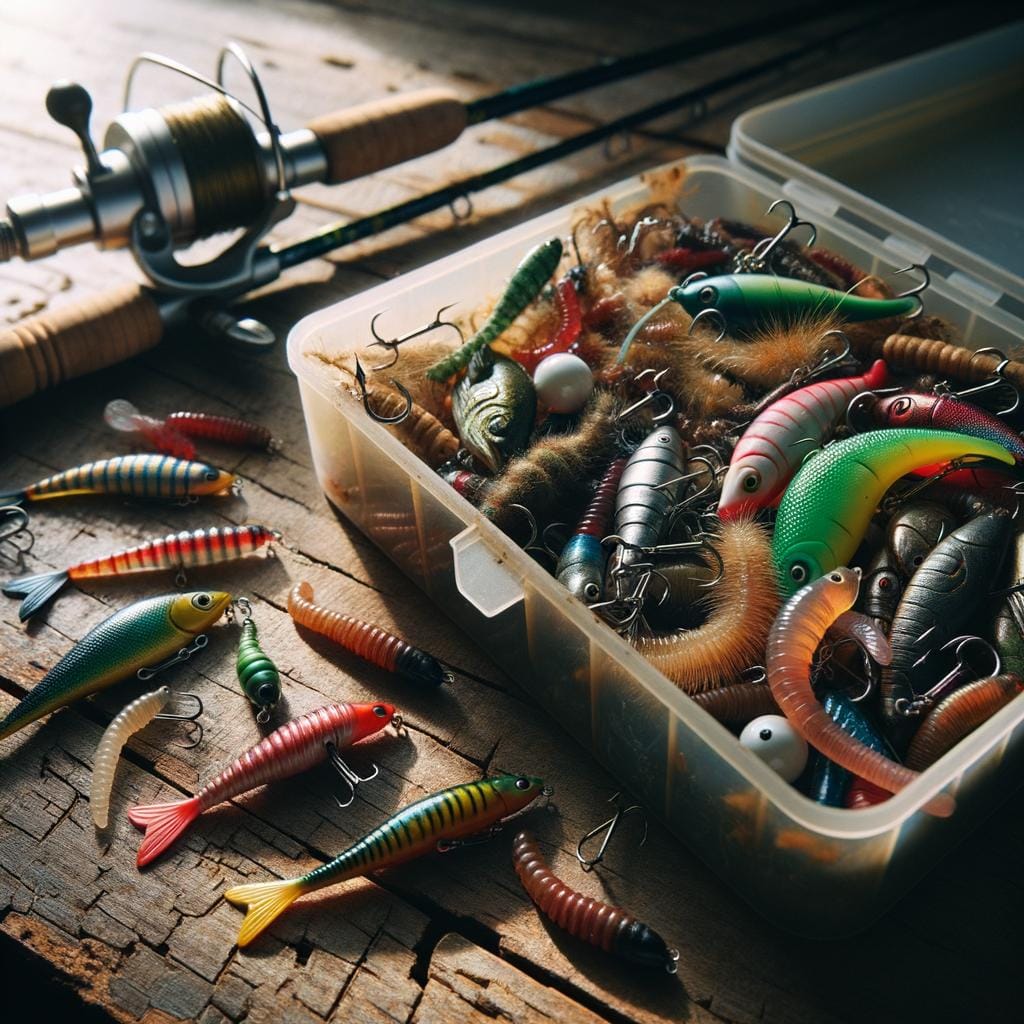When it comes to fishing, one practice that has gained popularity in recent years is catch and release. This method involves catching fish and then releasing them back into the water, rather than keeping them for consumption. Catch and release has become a crucial strategy in promoting sustainable fishing practices, ensuring the long-term health of fish populations and preserving aquatic ecosystems.
By practicing catch and release, anglers can help maintain healthy fish populations by allowing them to reproduce and grow. This approach also helps in conserving vulnerable species and maintaining the balance of marine life within ecosystems. Additionally, catch and release fishing allows individuals to enjoy the sport of fishing while minimizing their impact on the environment.
To successfully practice catch and release fishing, anglers must have the proper equipment and knowledge on how to handle fish safely. This includes using barbless hooks to reduce harm to the fish, having appropriate tools for hook removal, and knowing how to quickly release the fish back into the water.
It is essential to prioritize the well-being of the fish during catch and release, as improper handling can lead to stress or injury that may decrease its chances of survival after being released.
Benefits of Catch and Release for Fish Population Sustainability
When it comes to fishing, catch and release practices play a crucial role in ensuring the sustainability of fish populations. By releasing fish back into their natural habitats instead of keeping them for consumption, anglers can contribute to the long-term health of aquatic ecosystems. Here are some key benefits of catch and release for fish population sustainability:
- Preservation of Fish Stocks: Catch and release helps maintain healthy fish populations by allowing individuals to grow and reproduce, ultimately ensuring the survival of various species.
- Promotion of Genetic Diversity: Releasing fish back into the water promotes genetic diversity within fish populations, leading to increased resilience to environmental changes and challenges.
- Conservation of Endangered Species: Catch and release practices help protect vulnerable or threatened species from overfishing, giving them a better chance at recovery and survival.
Moreover, catch and release fishing also contributes to the overall balance of the ecosystem by maintaining predator-prey relationships and supporting biodiversity. It allows anglers to enjoy recreational fishing while minimizing negative impacts on fish populations and their habitats. To further enhance the effectiveness of catch and release efforts, it is essential for anglers to have the proper equipment and knowledge on how to handle fish safely during the process.
- Selecting suitable barbless hooks reduces injury to the fish during hook removal.
- Using landing nets with knotless mesh minimizes damage to scales and slime coats.
- Keeping handling time to a minimum helps reduce stress on the fish before releasing it back into the water.
Overall, practicing catch and release fishing offers numerous advantages for maintaining healthy fish populations and preserving aquatic ecosystems. By adopting responsible fishing practices, anglers can play a significant role in conservation efforts while still enjoying their favorite pastime. Ultimately, promoting sustainable fishing practices like catch and release is essential in ensuring a brighter future for our planet’s marine resources.
Proper Equipment Needed for Catch and Release Fishing
Selection of Barbless Hooks
One of the essential pieces of equipment needed for catch and release fishing is the use of barbless hooks. Barbless hooks are designed to make it easier to remove from a fish’s mouth without causing excessive damage. By using barbless hooks, anglers can minimize harm to the fish during the catching and releasing process. Additionally, barbless hooks facilitate quicker and more efficient hook removal, which reduces stress on the fish before releasing it back into the water.
Quality Fishing Line
Another important consideration when engaging in catch and release fishing is selecting a high-quality fishing line. A strong and durable fishing line is crucial for ensuring that the fish does not break off during the fight, reducing the chances of injury or harm to both the fish and its environment.
Anglers should always inspect their fishing line for any signs of wear or weakness before embarking on a catch and release fishing trip to prevent any mishaps while reeling in their catch.
Functional Landing Net
A landing net is a valuable tool for safely handling fish during catch and release. When choosing a landing net, anglers should opt for one with rubber mesh material that is gentle on the fish’s delicate skin and scales.
Landing nets help support the weight of the fish while allowing them to breathe properly out of water, minimizing stress during handling. Properly using a landing net can significantly enhance the success rate of catching and releasing fish unharmed back into their natural habitat.
How to Safely Handle Fish During Catch and Release
Catch and release fishing is a popular practice among anglers who want to enjoy the sport while also contributing to the conservation of fish populations. However, it is essential to handle the fish properly during the catch and release process to ensure their survival after being released back into the water. Improper handling can lead to injuries or stress that may impact the fish’s chances of surviving post-release.
One of the most important things to consider when handling fish during catch and release is minimizing the time they spend out of the water. The longer a fish is out of its natural habitat, the higher the chances of it experiencing stress or exhaustion, which can decrease its chances of survival. When landing a fish, try to do so quickly and efficiently to reduce the time it spends out of water.
Another crucial aspect of safely handling fish during catch and release is avoiding injuring them in any way. Make sure your hands are wet before touching the fish as dry hands can remove their protective slime coat, leaving them vulnerable to infections or parasites.
Additionally, using barbless hooks can make it easier to remove them without causing harm to the fish’s mouth or gills. By practicing proper handling techniques, anglers can increase the likelihood that caught fish will survive upon release back into their natural habitat.
| Aspect | Recommendation |
|---|---|
| Minimize time out of water | Landing fish quickly and efficiently |
| Avoid injuring fish | Use wet hands and barbless hooks for removal |
Ethical Considerations in Catch and Release Fishing
Respecting the Well-Being of Fish
When engaging in catch and release fishing, it is essential to consider the well-being of the fish being caught. While the practice is meant to be a conservation effort, improper handling and prolonged stress on the fish can lead to injuries or even death. It is crucial to minimize harm by using proper gear, handling techniques, and releasing the fish quickly back into the water.
Minimizing Harm and Maximizing Survival Rates
Ethical considerations in catch and release fishing revolve around minimizing harm and maximizing survival rates for the released fish. Using barbless hooks can help reduce damage to the fish’s mouth, making it easier to remove without causing significant injury. Additionally, ensuring that fish are properly revived before being released back into the water can greatly increase their chances of survival.
Conservation Mindset
One of the key ethical considerations in catch and release fishing is adopting a conservation mindset. Anglers should prioritize sustainability over personal gain, understanding that their actions directly impact fish populations and ecosystems. By practicing catch and release responsibly, anglers contribute to the preservation of aquatic environments for future generations to enjoy. Ultimately, ethical considerations play a crucial role in maintaining a balance between recreational fishing activities and environmental stewardship.
Success Stories of Catch and Release Programs
Catch and release programs have been implemented in various regions around the world as a conservation effort to help protect fish populations and ensure sustainable fishing practices. These programs have proven to be successful in replenishing fish stocks, promoting species diversity, and preserving the natural balance of aquatic ecosystems. Here are some success stories of catch and release programs:
- In the waters off the coast of Florida, a catch and release program for red snapper was introduced to help rebuild the declining population of this popular sport fish. Anglers were encouraged to release the red snapper they caught, especially those that did not meet the size limit regulations. Over time, this program has shown a significant increase in red snapper numbers, allowing the species to thrive once again.
- Similarly, in British Columbia, Canada, a catch and release program for wild steelhead trout has been instrumental in protecting this iconic species from overfishing and habitat degradation. By releasing wild steelhead back into their natural environment, anglers have contributed to maintaining healthy populations of these prized gamefish.
- On the rivers of Montana, USA, catch and release regulations for native trout such as cutthroat and brown trout have helped restore their populations and preserve their genetic diversity. Anglers practicing catch and release have played a crucial role in ensuring that these native trout species continue to thrive in their natural habitats.
These success stories demonstrate the effectiveness of catch and release programs in promoting conservation efforts and supporting sustainable fishing practices. By participating in catch and release fishing trips and following proper handling techniques, anglers can contribute to the long-term health of fish populations and help protect marine ecosystems for future generations to enjoy.
It is important for anglers to understand the importance of catch and release practices not only for individual fish but also for overall ecosystem health. By releasing fish back into their natural habitat unharmed, anglers can ensure that fish populations remain stable and resilient against external threats such as overfishing or habitat destruction. Through education, awareness, and active participation in catch and release programs, individuals can make a positive impact on marine conservation efforts worldwide.
Common Misconceptions About Catch and Release
One common misconception about catch and release fishing is that it is ineffective in actually helping fish populations. Some skeptics argue that catching a fish, even if released, can still have negative impacts on the fish’s health and survival. However, research has shown that when done correctly, catch and release fishing can actually benefit fish populations by allowing them to reproduce and grow larger in size.
Another misconception is that catch and release fishing is only for sport and does not contribute to conservation efforts. In reality, many fisheries around the world rely on catch and release practices to ensure sustainable fishing practices. By releasing fish back into their natural habitats, anglers are helping to maintain healthy ecosystems and protect vulnerable species from overfishing.
Additionally, some people believe that catch and release fishing is a cruel practice that causes unnecessary harm to the fish. However, with proper handling techniques and the right equipment (such as barbless hooks and dehooking tools), anglers can minimize stress on the fish and increase their chances of survival after being released back into the water. Ultimately, educating oneself on the best practices for catch and release fishing is essential in dispelling these misconceptions and promoting responsible angling practices.
Tips for a Successful Catch and Release Fishing Trip
Catch and Release fishing is a popular practice among anglers who want to enjoy the sport of fishing while also promoting sustainability and conservation of fish populations. To have a successful Catch and Release fishing trip, there are several important tips to keep in mind. One key aspect is using the right equipment, such as barbless hooks, which make it easier to safely release fish back into the water without causing harm.
Proper handling of the fish is crucial during Catch and Release fishing to ensure their survival after being caught. It is essential to minimize the time that the fish is out of the water, as extended periods can put stress on them and decrease their chances of survival once released.
Handling a fish with wet hands can help protect their delicate scales and skin, reducing the risk of injury that could impact their ability to swim and thrive in their natural habitat.
Another important tip for a successful Catch and Release fishing trip is to use proper techniques for releasing the fish back into the water. Avoid dropping or tossing the fish back into the water, as this can cause internal injuries.
Instead, gently hold the fish in the water facing upstream until it swims away on its own. By following these guidelines and being mindful of your impact on fish populations, you can have an enjoyable fishing experience while also contributing to sustainable practices in fisheries management.
| Tips | Details |
|---|---|
| Use Barbless Hooks | Make it easier to release fish without causing harm. |
| Handle Fish Carefully | Minimize time out of water & use wet hands to protect scales. |
| Release Techniques | Avoid dropping or tossing; gently hold in water facing upstream. |
Conclusion and Call to Action for Sustainable Fishing Practices
In conclusion, catch and release fishing has proven to be a valuable tool in promoting sustainability in fish populations around the world. By allowing fish to be caught and then released back into their natural habitat, anglers can help ensure the long-term health of aquatic ecosystems. The practice not only benefits the environment but also contributes to a more enjoyable fishing experience by maintaining healthy fish stocks for future generations of anglers to enjoy.
It is important for anglers to use proper equipment and techniques when practicing catch and release fishing to minimize stress on the fish and maximize their chances of survival after being released. By using barbless hooks, handling fish with wet hands, and releasing them quickly after capture, anglers can significantly increase the likelihood that the fish will survive and thrive after being caught.
Following these guidelines ensures that the catch and release process is as effective as possible in preserving fish populations.
As we look towards the future of recreational fishing, it is crucial that we continue to prioritize sustainable practices such as catch and release. By adopting ethical considerations, using proper handling techniques, and dispelling common misconceptions about catch and release fishing, anglers can contribute to the preservation of our aquatic resources. Let us all commit to responsible fishing practices and spread awareness about the importance of catch and release in safeguarding our precious marine environments for years to come.
Frequently Asked Questions
What Was the Secret in Catch and Release?
The secret in Catch and Release was the unexpected revelation that Gray’s deceased fiancé, Fritz, had a secret life with another woman and a child. This hidden truth significantly impacted Gray’s grieving process and relationships with those around her.
Was Catch and Release a Good Movie?
Whether Catch and Release is considered a good movie depends on personal taste. Some viewers appreciate the heartfelt exploration of grief, healing, and new beginnings portrayed in the film. Others may find the plot predictable or the pacing slow.
Is Catch and Release Worth It?
In determining if Catch and Release is worth watching, consider factors such as your interest in romantic dramas, character-driven stories, and themes of loss and moving forward. If these elements resonate with you, giving the film a chance could prove rewarding for your viewing experience.

An avid outdoor enthusiast, writer, and environmental advocate who has spent over two decades exploring the world’s most breathtaking landscapes. With a background in environmental science and a passion for adventure, Frances combines her love for nature with her talent for storytelling to inspire others to embark on their own outdoor journeys.




